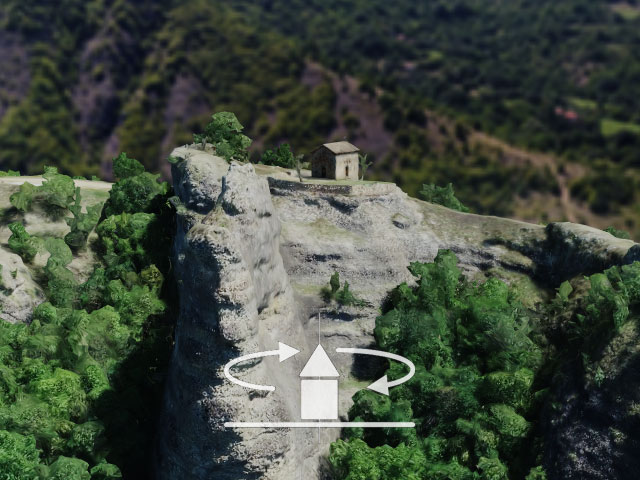Church of the Holy Mother of God
Protected cultural monument of special significance, listed as SK 27 in the Central registry of the Republic Institute for the protection of cultural monuments.
Church of the Holy Mother of GodDonja Trnjica village, Vražji kamen, Trgovište municipality
Where is it located?
The natural phenomenon called Devil’s Stone (Vražji kamen) is located in the southeast of Serbia, in Pčinj district, in the close vicinity of the village Donja Trnica, 5km from Trgovište, near the border with Bulgaria and North Macedonia. The church of the Holy Mother of God was built on the rock, in the place where the river Pčinja cut the riverbed into the rock and the erosion formed a dozen of stone towers representing the Devil’s Stone. The pillars are 50-60 m high, and the plateau itself stands at 800 m above the sea level.
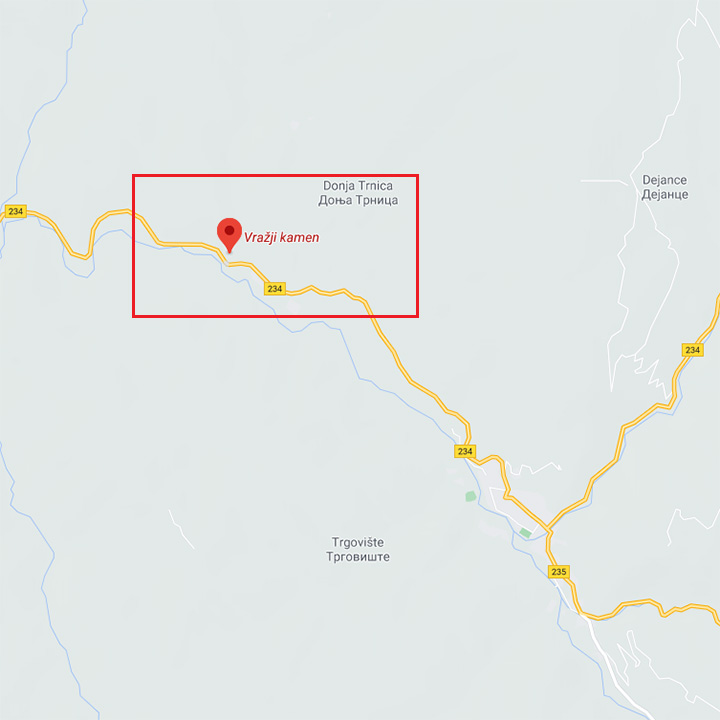
Research
In the early XX century conservatory-restauration works were performed on the church, masonry work was done on the semicircular vault, the narthex was repaired, and the roof above the church covered in stone slabs was restored. Necessary interventions were performed on the iconography, in order to preserve at least those things that had stood the ravages of time.
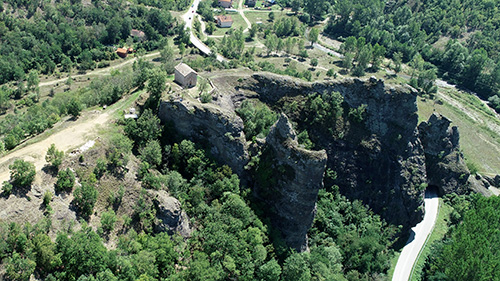
Dating
According to the way it was built and the characteristics of the iconography, the church is dated in the second half of the XIV century, more precisely between 1350 and 1380, during the reign of Stefan Uroš V, the heir to emperor Dušan. The ktetor of the church is believed to have been the local nobleman Dejan Marković. In the XIX century, the narthex of adequate dimensions was added to the church.
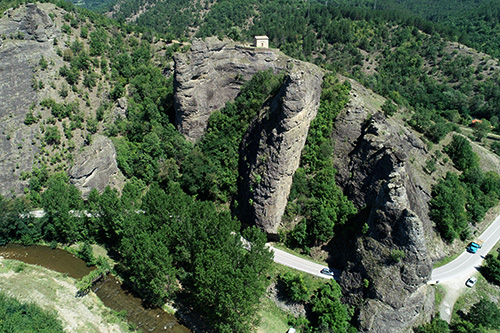
Description
The church dedicated to Holy Mother of God is a small single nave temple with a semi-circular apse in the east. The entrance to the naos is on the western wall, and there is another one on the southern side. Massive masonry stone iconostas with two vaulted passages separates the altar space from the naos. The naos is dimly lit by two small windows in the east wall.
The west façade of the church has a semi-circular vaulted niche above the entrance. The edge of the vault is decorated with a line of bricks and the niche contains a fresco of the Holy Mother of God.
The south façade is divided into three niches.
The apse is specially decorated with a zig-zag ornament in brick.
Under the roof there is a decorative wreath made of slanted bricks.
On the outside, the church is not plastered so the combination of stone and bricks makes the façade especially decorative.
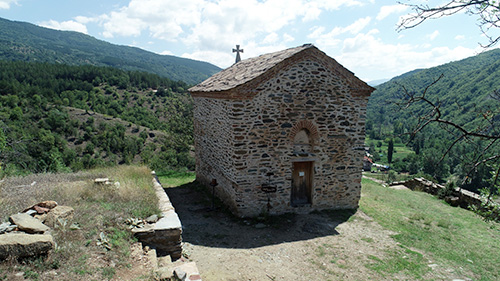
Iconography
What remains from the frescoes is a zone of standing figures and the cycle of Great holidays with several scenes from the life of the Holy Mother of God, to whom the temple is dedicated. Certain members of the bishops’ council are painted on the east wall, which is not common. It appears that the church was painted by two painters, since two different styles can be distinguished.
Folklore and belief:
There are several legends on the origin of Devil’s Stone, and the devil is featured in every one of them. Nobody lives in the area surrounding the church, and no wedding ceremonies are held there because, according to folk belief, the place is cursed, “devil’s works”.
One legend says that the devils tried to move the flow of the river Pčinja and direct it towards Bulgaria. Although they moved entire rocks, they could not tame the river. When they ran out of rocks, they traveled south. In the Končulj gorge they found a huge rock and carried it on their backs all the way back, stopping for rests along the way. At one moment they heard roosters, dropped the rock and that is how Devil’s Stone came to be.
Another legend says that the locals started building a church near the Pčinja but the devils tore whatever was built during the day and took it to the Devil’s Stone by night. They were angry at the farmers who did not respect them. That is how the church came to be built on the 60 m high plateau.
Another one among many legends surrounding unusual natural phenomena says that a rich young man fell in love with a beautiful poor girl. Despite his parents’ protests, they decided to get married in the church on the Devil’s Stone. After the ceremony, the wedding party mounted their decorated horses and headed home. The groom’s horse was scared by the noise and the music, darted forward and fell in the abyss together with his rider. Desperate, the bride jumped after him and the whole festivity turned into mourning. After that, nobody god married in that church, nor were any children baptized.
The people in this area believe that the Holy Mother of God, to whom the church is dedicated, cures infertility in women. Those who cannot bear children come into the church, secretly scrape the dust from the frescoes and drink it diluted in water.
Julka Kuzmanović Cvetkovićarcheologist
